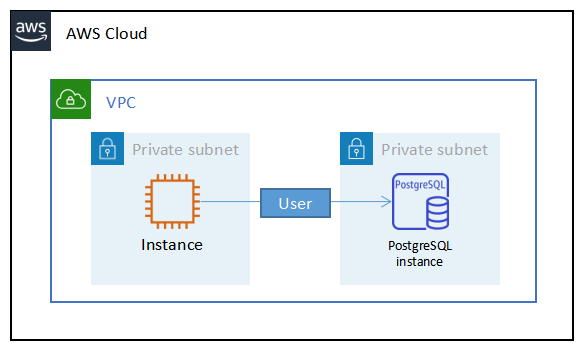

And like most of the things, it’s a cost vs effort/complexity trade-off. There is no right or wrong decision when choosing RDS or EC2 for database.

RDS clearly sounds expensive, but it has its own advantages. Instance type: db.m4.large | 2 vCPUs | 8 GB Memory | Moderate I/O Storage: EBS General Purpose SSD | 100 GB $0.1 per GB per month Instance type: m4.large | 2 vCPUs | 8 GB Memory | Moderate I/O Not much limitations using Amazon RDS right? Let’s compare pricing, considering similar instance configurations. you can’t access the server operating system. Yes, you heard it right, as RDS is a managed database. Let us discuss about some of the cons of using AWS RDS.
#Aws postgresql dump django in ec2 software
Software PatchingĪmazon RDS makes sure that your database stays up-to-date with latest patches. You can read more about Encrypting Amazon RDS Resources. You can encrypt it with the keys and it is managed by AWS Key Management Service. SecurityĪmazon RDS allow you to secure your data with the help of data encryption. MonitoringĪmazon RDS sends metrics to CloudWatch every single minute for each and every database instance that is active with no additional charge. PerformanceĪWS RDS offers PIOPS (Provisioned IOPS) in order to achieve fast, consistent and predictable Input/Output (I/O) performance. You might need to setup Streaming Replication to scale your database. You can scale your RDS Instance vertically and horizontally with single push of a button. You can scale your database by adding replicas. Scaling up your database becomes very easy with Amazon RDS. You might also have to configure repmgr to manage replication and failover in a cluster of PostgreSQL servers. While PostgreSQL directly does not provide automatic failover, you will have to manually setup automatic failover with PostgreSQL. It also offers domain name server (DNS) to access RDS, so even if the master database instance goes down, an RDS automatic failover mechanism will change the master DNS to a replica in order to achieve high availability. With the Multi-AZ feature, AWS provides a synchronous “standby” replica of every database in another “zone.” Since both the database and its replica are in sync, there is no chance of data loss. While setting up backup & restore on PostgreSQL is not as easy as it is with Amazon RDS. You also get a simple way to take consistent and deliverable snapshots on-demand and keep them as long as you want. With Amazon RDS, you get automated backups that let you recover to a pointed time you choose. If you go with your own EC2 instance, you have to setup PostgreSQL for high availability from one of the different replication solutions. It comes with a feature called Amazon RDS Multi-AZ Deployment, which automatically creates a primary DB Instance and synchronously replicates the data to a standby instance in a different Availability Zone (AZ). You can configure everything from the AWS Dashboard and its done! AvailabilityĪmazon RDS is a highly available relational database.
#Aws postgresql dump django in ec2 install
There is no need to buy hardware, install the software and manage database access. Setting up a PostgreSQL database on Amazon RDS is just a few clicks and go. One of the advantages of developers using Amazon RDS instead of managing their own databases is that it reduces or eliminates their administrative responsibilities.īenefits of using Amazon RDS over Amazon EC2 for PostgreSQL server. This post might help you in choosing either use Amazon RDS or your own Amazon EC2 instance with PostgreSQL installed. I will try to compare Amazon RDS vs Amazon EC2 for PostgreSQL database.


 0 kommentar(er)
0 kommentar(er)
